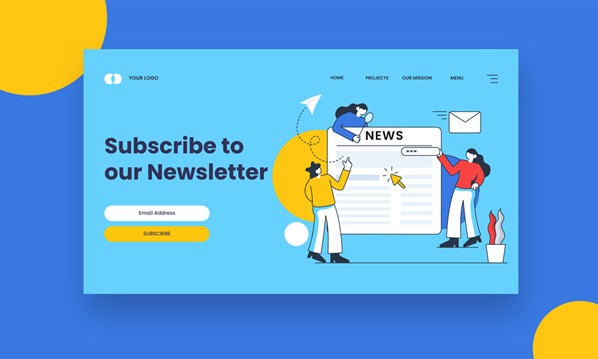
Online popup builders have become effective tools for creating interesting and dynamic experiences that increase user engagement, conversions, and brand loyalty. In this article, we will examine the capabilities of online popup builders, highlighting their features and advantages and presenting examples of top platforms that help businesses design attractive popups.
What Are Online Popup Builders?
An online popup builder is a web-based tool that allows organizations to create, personalize, and distribute popup messages or overlays on their websites or digital channels. Popups can be used for a variety of objectives, such as collecting email addresses, advertising special deals, announcing events, conducting surveys, or providing users with pertinent information.
Key features of popup builders
1. Drag-and-drop editors
Most online popup builders include simple drag-and-drop editors, allowing users to construct visually appealing popups without technical knowledge. Users can simply edit features like text, photos, buttons, forms, and animations to reflect their brand identity and goals.
2. Templates and themes
Usually, popup builders provide a whole library of pre-designed templates and themes to help with the building process. These templates are frequently grouped by use cases (e.g., newsletter sign-up, discount offer, exit-intent popup) and can be tailored to the brand’s aesthetics and content.
3. Targeting and triggering options
Advanced popup builders provide powerful targeting and triggering capabilities for delivering relevant messages to specified audience segments at the appropriate moment. Users can activate popups based on page visits, time spent on the site, exit intent, scroll depth, or user activity, ensuring visitors get a tailored and contextualized experience.
4. A/B testing
A/B testing (or split testing) enables users to maximize conversion rates by experimenting with alternative popup designs, messages, and call-to-action (CTA) buttons. Popup builders use performance indicators like click-through rates, conversion rates, and engagement metrics to determine the most successful versions.
5. Integration and analytics
Integration with third-party platforms, including email marketing software, CRM systems, analytics tools, and e-commerce platforms, allows for easy data interchange and workflow automation. Additionally, built-in analytics dashboards give insights on popup performance, user interactions, and conversion data to help with decision-making and optimization efforts.
6. Exit-intent technology
Exit-intent technology detects when a user is about to leave a website and displays a popup with a last-minute reward or message to entice them to stay or take action. Popup builders that use exit-intent technology can effectively minimize bounce rates and cart abandonment by re-engaging visitors before they leave the website.
7. Mobile responsiveness
With the growing popularity of mobile surfing, popups must be adapted for a variety of screen sizes and devices. Leading popup builders focus on mobile responsiveness, ensuring that popups appear and work correctly on smartphones and tablets without sacrificing user experience or performance.
8. Compliance and privacy features
Given data privacy rules like GDPR and CCPA, popup builders include measures that assure compliance with applicable laws and regulations. These capabilities include requesting user consent for data collection, managing cookie settings, showing privacy rules, and adopting secure data handling techniques to protect user information.
Examples of Online Popup Builders
Organizations can uncover new growth prospects, increase customer happiness, and meet their marketing goals by harnessing the capabilities of online popup builders and taking a data-driven approach to optimization.
OptinMonster
OptinMonster is a famous popup builder noted for its easy-to-use interface, powerful targeting capabilities, and a vast library of configurable themes. It includes exit-intent technology, A/B testing, analytics, and interfaces with top email marketing and CRM platforms.
Sumo
Sumo offers a variety of marketing tools, including a popup builder, to help businesses expand their online audience and enhance conversions. Its drag-and-drop editor, targeting rules, and integration features make it an adaptable option for enterprises of any size.
Hello Bar
Hello Bar specializes in developing eye-catching popups, banners, and bars to increase engagement and conversions. It provides customized templates, advanced targeting options, A/B testing, and real-time statistics to improve performance and ROI.
ConvertFlow
ConvertFlow is a complete conversion optimization tool that allows organizations to design, personalize, and target popups, forms, quizzes, and surveys. Its visual editor, conditional logic, and automation tools allow users to create highly personalized experiences that resonate with their target audience.
Privy
Privy is a user-friendly popup builder for e-commerce firms, shops, and online stores. It includes customized layouts, exit-intent popups, cart abandonment recovery emails, and connectivity with well-known e-commerce platforms like Shopify, WooCommerce, and BigCommerce.
Things to Avoid When Using Online Popup Builders
When utilizing online popup builders, it is critical to avoid common mistakes that might distract from the user experience, reduce efficacy, and possibly hurt your brand’s reputation. Here are the three major pitfalls to avoid.
1. Overuse of popups
Avoid displaying too many popups or flashing them too frequently since this might break browsing flow, irritate users, and raise bounce rates. Instead, concentrate on popups’ strategic placement and timing to send relevant messages that improve rather than detract from the user experience.
2. Poor timing and targeting
Refraining from replaying popups too soon after a user arrives on a website or interrupting them during a key activity can be intrusive and ineffective. Similarly, displaying irrelevant or generic popups to all visitors, regardless of their interests or stage in the buyer’s journey, can result in alienation and decreased efficacy. Optimize popup timing and targeting by using data insights, user segmentation, and behavior-based triggers to send timely and targeted messages that resonate with your target population.
3. Cluttered and invasive Design
Avoid utilizing too much text, distracting animations, or bold colors that overwhelm the core information and make it difficult for consumers to browse or dismiss the popup. Instead, favor clean, visually appealing designs that match the website’s aesthetics while communicating the content clearly.
To Sum Up
Online popup builders are a versatile and efficient option for organizations that want to increase user engagement, acquire leads, and drive conversions. With their user-friendly interfaces, configurable templates, powerful targeting choices, and integration possibilities, these platforms enable marketers to build engaging and personalized experiences that resonate with their audience.




